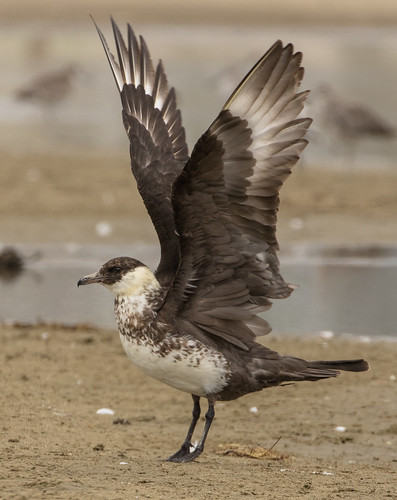Ation factor eIF2. Phosphorylation of eIF2 leads to international reduction in protein synthesis to cut down ER overload. Nonetheless eIF2 also can market transcription of activating transcriptional aspect four, which, in turn, can raise the expression with the central ER chaperone BIP/GRP94. ATF4 can also be recognized to activate the expression of apoptosis-related genes which include C/EBP-homologous protein . Western blot Ligustilide web evaluation revealed comparable levels of eIF2 in shielded and light exposed retinas from mutant T4R RHO and WT dogs. A very faint band corresponding to the phosphorylated form of eIF2 was similarly detected in both exposed and shielded retinas suggesting that that there was no activation of eIF2 beyond the low basal levels. Detection of a single band at the appropriate molecular weight in protein extracts from MDCK cells treated together with the ER-stress inducer tunicamycin confirmed the ML 176 site specificity from the P-eIF2 antibody against the canine amino-acid sequence. Consistent using the absence of activation of eIF2 we didn’t detect by qRT-PCR any improved expression of the downstream ATF4 transcript following light exposure. The results, therefore, did not show any proof for activation with the PERK pathway 6 hours after a light exposure that leads to rod degeneration inside the T4R RHO retina. Fig four. PERK-elF2-ATF4 pathway in mutant T4R RHO and WT canine retinas 6 hours immediately after light exposure. Immunoblots displaying the protein levels of total and phosphorylated types of eIF2 in light exposed in comparison to shielded retinas of mutant, and WT dogs. A single retina from a WT dog kept beneath normal ambient kennel illumination was incorporated as a handle of basal levels of total and phosphorylated eIF2. MDCK cells either treated with DMSO or Tunicamycin were made use of as controls of P-eIF2 expression and antibody specificity. Differential expression of gene ATF4 within the retinas of 3 RHO T4R/T4R mutant dogs following light exposure. Displayed would be the mean fold change distinction in comparison to the contralateral shielded retinas. Error bars represent the FC range. doi:ten.1371/journal.pone.0115723.g004 11 / 22 Absence of UPR in the T4R RHO Canine Retina Fig 5. IRE1-XBP1 pathway in mutant T4R RHO and WT canine retinas 6 hours after light exposure. RT-PCR evaluation of XBP1 splicing in light exposed in comparison with shielded T4R RHO and WT retinas. RT-PCR  of canine XBP1 generated a 289 bp fragment, which represents the unspliced form of canine XBP1. The 263 bp fragment, which represents the spliced type of canine XBP1 was not observed except inside the tunicamycin treated normal canine fibloblasts. A retina from a wild-type dog
of canine XBP1 generated a 289 bp fragment, which represents the unspliced form of canine XBP1. The 263 bp fragment, which represents the spliced type of canine XBP1 was not observed except inside the tunicamycin treated normal canine fibloblasts. A retina from a wild-type dog  kept below typical ambient kennel illumination was applied as a handle of basal XBP1 expression and splicing. Differential expression of genes XBP1 and ASK1 in the retinas of three RHO T4R/T4R mutant dogs following light exposure. Three distinctive sets of primers were utilized to particularly amplify the unspliced, spliced and both XBP1 transcripts. Displayed would be the imply fold modify distinction when compared with the contralateral shielded retinas. Error bars represent the FC range. Immunoblots displaying the protein levels of total and phosphorylated types of XBP1 in light exposed when compared with shielded retinas of mutant, and WT dogs. A single retina from a wild-type dog kept beneath typical ambient kennel illumination was integrated as a handle of basal levels of XBP1. doi:10.1371/journal.pone.0115723.g005 The IRE1 branch in the UPR is activated just after oligomerization and autophosphorylation.Ation element eIF2. Phosphorylation of eIF2 leads to international reduction in protein synthesis to decrease ER overload. Even so eIF2 also can market transcription of activating transcriptional issue 4, which, in turn, can raise the expression with the central ER chaperone BIP/GRP94. ATF4 can also be identified to activate the expression of apoptosis-related genes like C/EBP-homologous protein . Western blot analysis revealed related levels of eIF2 in shielded and light exposed retinas from mutant T4R RHO and WT dogs. An extremely faint band corresponding for the phosphorylated form of eIF2 was similarly detected in both exposed and shielded retinas suggesting that that there was no activation of eIF2 beyond the low basal levels. Detection of a single band in the appropriate molecular weight in protein extracts from MDCK cells treated using the ER-stress inducer tunicamycin confirmed the specificity with the P-eIF2 antibody against the canine amino-acid sequence. Constant with the absence of activation of eIF2 we didn’t detect by qRT-PCR any elevated expression on the downstream ATF4 transcript following light exposure. The outcomes, for that reason, didn’t show any evidence for activation from the PERK pathway 6 hours just after a light exposure that results in rod degeneration in the T4R RHO retina. Fig four. PERK-elF2-ATF4 pathway in mutant T4R RHO and WT canine retinas six hours soon after light exposure. Immunoblots displaying the protein levels of total and phosphorylated types of eIF2 in light exposed in comparison to shielded retinas of mutant, and WT dogs. A single retina from a WT dog kept under typical ambient kennel illumination was integrated as a manage of basal levels of total and phosphorylated eIF2. MDCK cells either treated with DMSO or Tunicamycin have been employed as controls of P-eIF2 expression and antibody specificity. Differential expression of gene ATF4 within the retinas of 3 RHO T4R/T4R mutant dogs following light exposure. Displayed could be the mean fold adjust difference compared to the contralateral shielded retinas. Error bars represent the FC variety. doi:ten.1371/journal.pone.0115723.g004 11 / 22 Absence of UPR in the T4R RHO Canine Retina Fig five. IRE1-XBP1 pathway in mutant T4R RHO and WT canine retinas 6 hours soon after light exposure. RT-PCR analysis of XBP1 splicing in light exposed in comparison to shielded T4R RHO and WT retinas. RT-PCR of canine XBP1 generated a 289 bp fragment, which represents the unspliced kind of canine XBP1. The 263 bp fragment, which represents the spliced type of canine XBP1 was not observed except within the tunicamycin treated typical canine fibloblasts. A retina from a wild-type dog kept beneath normal ambient kennel illumination was used as a handle of basal XBP1 expression and splicing. Differential expression of genes XBP1 and ASK1 inside the retinas of three RHO T4R/T4R mutant dogs following light exposure. 3 different sets of primers had been applied to especially amplify the unspliced, spliced and each XBP1 transcripts. Displayed are the imply fold modify difference compared to the contralateral shielded retinas. Error bars represent the FC variety. Immunoblots displaying the protein levels of total and phosphorylated forms of XBP1 in light exposed in comparison to shielded retinas of mutant, and WT dogs. A single retina from a wild-type dog kept under common ambient kennel illumination was incorporated as a handle of basal levels of XBP1. doi:ten.1371/journal.pone.0115723.g005 The IRE1 branch with the UPR is activated right after oligomerization and autophosphorylation.
kept below typical ambient kennel illumination was applied as a handle of basal XBP1 expression and splicing. Differential expression of genes XBP1 and ASK1 in the retinas of three RHO T4R/T4R mutant dogs following light exposure. Three distinctive sets of primers were utilized to particularly amplify the unspliced, spliced and both XBP1 transcripts. Displayed would be the imply fold modify distinction when compared with the contralateral shielded retinas. Error bars represent the FC range. Immunoblots displaying the protein levels of total and phosphorylated types of XBP1 in light exposed when compared with shielded retinas of mutant, and WT dogs. A single retina from a wild-type dog kept beneath typical ambient kennel illumination was integrated as a handle of basal levels of XBP1. doi:10.1371/journal.pone.0115723.g005 The IRE1 branch in the UPR is activated just after oligomerization and autophosphorylation.Ation element eIF2. Phosphorylation of eIF2 leads to international reduction in protein synthesis to decrease ER overload. Even so eIF2 also can market transcription of activating transcriptional issue 4, which, in turn, can raise the expression with the central ER chaperone BIP/GRP94. ATF4 can also be identified to activate the expression of apoptosis-related genes like C/EBP-homologous protein . Western blot analysis revealed related levels of eIF2 in shielded and light exposed retinas from mutant T4R RHO and WT dogs. An extremely faint band corresponding for the phosphorylated form of eIF2 was similarly detected in both exposed and shielded retinas suggesting that that there was no activation of eIF2 beyond the low basal levels. Detection of a single band in the appropriate molecular weight in protein extracts from MDCK cells treated using the ER-stress inducer tunicamycin confirmed the specificity with the P-eIF2 antibody against the canine amino-acid sequence. Constant with the absence of activation of eIF2 we didn’t detect by qRT-PCR any elevated expression on the downstream ATF4 transcript following light exposure. The outcomes, for that reason, didn’t show any evidence for activation from the PERK pathway 6 hours just after a light exposure that results in rod degeneration in the T4R RHO retina. Fig four. PERK-elF2-ATF4 pathway in mutant T4R RHO and WT canine retinas six hours soon after light exposure. Immunoblots displaying the protein levels of total and phosphorylated types of eIF2 in light exposed in comparison to shielded retinas of mutant, and WT dogs. A single retina from a WT dog kept under typical ambient kennel illumination was integrated as a manage of basal levels of total and phosphorylated eIF2. MDCK cells either treated with DMSO or Tunicamycin have been employed as controls of P-eIF2 expression and antibody specificity. Differential expression of gene ATF4 within the retinas of 3 RHO T4R/T4R mutant dogs following light exposure. Displayed could be the mean fold adjust difference compared to the contralateral shielded retinas. Error bars represent the FC variety. doi:ten.1371/journal.pone.0115723.g004 11 / 22 Absence of UPR in the T4R RHO Canine Retina Fig five. IRE1-XBP1 pathway in mutant T4R RHO and WT canine retinas 6 hours soon after light exposure. RT-PCR analysis of XBP1 splicing in light exposed in comparison to shielded T4R RHO and WT retinas. RT-PCR of canine XBP1 generated a 289 bp fragment, which represents the unspliced kind of canine XBP1. The 263 bp fragment, which represents the spliced type of canine XBP1 was not observed except within the tunicamycin treated typical canine fibloblasts. A retina from a wild-type dog kept beneath normal ambient kennel illumination was used as a handle of basal XBP1 expression and splicing. Differential expression of genes XBP1 and ASK1 inside the retinas of three RHO T4R/T4R mutant dogs following light exposure. 3 different sets of primers had been applied to especially amplify the unspliced, spliced and each XBP1 transcripts. Displayed are the imply fold modify difference compared to the contralateral shielded retinas. Error bars represent the FC variety. Immunoblots displaying the protein levels of total and phosphorylated forms of XBP1 in light exposed in comparison to shielded retinas of mutant, and WT dogs. A single retina from a wild-type dog kept under common ambient kennel illumination was incorporated as a handle of basal levels of XBP1. doi:ten.1371/journal.pone.0115723.g005 The IRE1 branch with the UPR is activated right after oligomerization and autophosphorylation.
